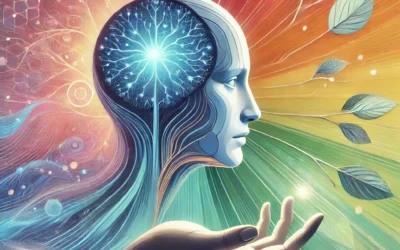In the vast tapestry of human experience, two threads consistently emerge as foundational to our well-being: the practice of yoga and the emotion of gratitude. While they may seem like separate entities at first glance, a deeper exploration reveals a profound interconnectedness that has been seldom explored.
Yoga, a holistic journey of self-discovery, is not merely a series of physical postures and breathing exercises. It beckons us to peel back the layers of our existence and connect with our true selves. Gratitude, on the other hand, is an emotion that reminds us of the beauty in the present moment and the interconnectedness of all life.
But what happens when we intertwine these two powerful forces? Can the deliberate cultivation of gratitude within our yoga practice lead to deeper levels of self-awareness and mental well-being? And how does this integration resonate with the broader philosophy of yoga, which seeks to harmonize the mind, body, and spirit?
For those feeling adrift in the tumultuous seas of modern life, the fusion of gratitude and yoga offers a beacon of hope. It’s a call to anchor oneself in the present, to recognize and cherish the miracles that unfold around us every day, and to embark on a transformative journey inward.


The Ancient Roots of Yoga and Gratitude
The intertwining of yoga and gratitude is not a modern-day phenomenon. To appreciate their deep-rooted connection, we must journey back in time to the ancient yogis and sages who recognized the transformative power of gratitude within the framework of yoga.
The Yamas and Niyamas: Ethical Guidelines of Yoga
The Yamas and Niyamas, often considered the ethical backbone of yoga, provide a set of guidelines for leading a life of purpose, integrity, and inner peace. Among these, the concept of Santosha stands out as particularly resonant with our exploration of gratitude.
Santosha, as detailed in the referenced article, is one of the Niyamas and translates to contentment. It’s a state of deep acceptance, a serene acknowledgment of the present moment without the incessant need for more. But how does one cultivate such contentment in a world that often seems to pull us in a myriad of directions?
Gratitude, as the article elucidates, emerges as a potent tool in this quest. By consciously recognizing and cherishing the blessings in our lives, we nurture a sense of contentment, anchoring ourselves in the present. The research highlighted in the article underscores the ripple effects of this practice: fostering relationships, deepening our connection with others, and acting with heightened compassion. Such findings echo the teachings of ancient yogic texts, emphasizing the harmonious alignment between gratitude and Santosha.
The Bhakti Tradition: Devotion and Gratitude
Venturing further into the annals of yoga philosophy, we encounter the Bhakti tradition. Bhakti yoga, often termed the yoga of devotion, is centered around cultivating a deep sense of love and devotion towards the divine. This path is paved with gratitude. Every chant, every prostration, every act of surrender in Bhakti yoga is an expression of profound gratitude towards the universe and its divine orchestrations.
In the Bhakti tradition, gratitude is not a mere emotion; it’s a way of life. It’s the recognition of the divine play, the dance of creation and dissolution, and our privileged role within it. By immersing ourselves in this devotional practice, we not only deepen our connection with the divine but also cultivate a sustained sense of gratitude that permeates every facet of our lives.
In essence, the ancient roots of yoga offer a treasure trove of wisdom, guiding us towards a life imbued with gratitude. From the ethical teachings of the Yamas and Niyamas to the heart-centered practices of Bhakti, the message is clear: gratitude is not an afterthought; it’s an integral component of the yogic journey. As we navigate the challenges of our contemporary world, these age-old teachings beckon us to pause, reflect, and cherish the myriad blessings that grace our lives.


The Science of Gratitude and Mental Well-being
In the realm of modern science, the wisdom of yoga and the power of gratitude find validation. Contemporary research highlights the profound impact of gratitude on our mental and physical well-being. The ancient sages might not have had access to fMRI machines or intricate psychological studies, but their insights resonate deeply with the findings of today’s scientific community.
Neurological Benefits: Brain on Gratitude
The human brain, a marvel of evolution, is incredibly malleable. It responds and adapts to our experiences, thoughts, and emotions. Gratitude, it seems, has a particularly profound impact on our neural pathways. According to an article from Forbes, gratitude is linked to enhanced physical health markers such as reduced stress, bolstered immune function, improved sleep quality, and diminished rates of depression and anxiety. But how does this translate at the neurological level?
The Positive Psychology article delves deeper into the neuroscience of gratitude. It underscores the positive correlation between gratitude and vitality, energy, and an amplified enthusiasm to work diligently. When individuals engage in gratitude practices, certain brain regions associated with pleasure, social bonding, and reward are activated. This not only fosters a sense of well-being but also propels individuals towards positive actions, such as cooperating with treatment procedures or being more committed to physical workouts.
Psychological Benefits: Boosting Mental Health
Beyond the neurological realm, gratitude casts a wide net of benefits on our psychological health. The act of recognizing and cherishing the positive aspects of life shifts our focus from what we lack to what we possess. This shift in perspective, as highlighted in the Forbes article, fosters optimism and strengthens social bonds. In a world where isolation and pessimism often loom large, gratitude emerges as a beacon of hope, guiding us towards connection, positivity, and resilience.
The science of gratitude offers a compelling testament to its transformative power. Whether we approach it from a neurological or psychological perspective, the message is unequivocal: gratitude is not just a fleeting emotion; it’s a potent force that shapes our brain, uplifts our spirit, and enhances our overall well-being.
By anchoring ourselves in the present moment and cherishing the blessings that surround us, we gain clarity of vision and a renewed perspective. This not only alleviates immediate distress but also equips us with the tools to navigate future challenges with grace and poise.


Integrating Gratitude into Your Yoga Practice
The harmonious blend of gratitude and yoga offers a transformative path to holistic well-being. While both practices independently provide profound benefits, their combined power can lead to unparalleled personal growth and healing.
But how can one seamlessly integrate gratitude into the intricate tapestry of yoga? Let’s explore some seldom-discussed, yet deeply impactful, methods to weave gratitude into the very fabric of your yoga journey:
Setting Intentions: Starting with a Grateful Heart
Every yoga session offers a fresh start, a blank canvas upon which we can paint our intentions. Before diving into the physical postures or pranayama exercises, take a moment to ground yourself in gratitude.
- Personal Reflection: Begin by reflecting on a recent event, no matter how small, that brought joy or comfort. It could be a kind gesture from a stranger, a moment of clarity during meditation, or the simple pleasure of a warm cup of tea.
- Affirmative Mantras: Craft a gratitude-focused mantra, such as “I am thankful for the abundance in my life” or “With each breath, I cherish the present.” Recite this mantra silently as you transition between asanas, allowing its essence to permeate your practice.
Mindful Asanas: Feeling Gratitude in Every Pose
The physical postures of yoga, or asanas, offer a unique opportunity to cultivate gratitude for our bodies and their capabilities.
- Body Appreciation: In each pose, instead of striving for perfection or lamenting limitations, focus on appreciating your body’s efforts. For instance, in a forward bend, rather than lamenting tight hamstrings, express gratitude for the stretch, the blood flow, and the sensation itself.
- Nature’s Embrace: If practicing outdoors, take a moment in each asana to connect with nature. Feel the earth supporting you, the wind caressing your skin, and the sun’s warmth. Express silent gratitude for these natural elements that enhance your practice.
Gratitude Meditation: A Journey Inward
Meditation, the heart of yoga, offers a sanctuary for introspection and self-awareness. Integrating gratitude into this practice can amplify its transformative effects.
- Guided Visualization: Begin your meditation by visualizing a golden light at your heart center, representing gratitude. With each inhalation, imagine this light expanding, filling your entire being. With each exhalation, envision this gratitude radiating outwards, touching everyone and everything around you.
- Gratitude Journaling Post-Meditation: After your meditation, maintain the serene ambiance and jot down three things you’re grateful for. This practice not only reinforces gratitude but also provides a reflective record to revisit during challenging times.
Pranayama: Breathing in Gratitude
Breath, the life force or prana, is central to yoga. Through pranayama or breath control exercises, we can infuse gratitude into our very life force.
- Grateful Inhalations: During inhalations, imagine drawing in positive energy and blessings from the universe.
- Releasing Exhalations: As you exhale, visualize releasing any negativity, making space for more gratitude with the next breath.
Closing Ritual: Sealing in Gratitude
As you conclude your yoga session, create a ritual to seal in the gratitude cultivated during your practice.
- Gratitude Mudra: Join your hands in Anjali Mudra (prayer position) at your heart center. Silently express gratitude for the practice, your body, and the present moment.
- Dedication: Dedicate the positive energy generated during your session to someone in need or a higher purpose. This act of selfless giving reinforces the cycle of gratitude, as you acknowledge the interconnectedness of all beings.


Incorporating gratitude into your yoga practice is more than just a fusion of two disciplines; it’s a holistic approach to life. It’s about recognizing the miracles in every moment, cherishing the journey, and understanding that every breath, every pose, and every meditation is a gift. As we navigate the complexities of modern life, this integrated practice offers a sanctuary, a space where gratitude and yoga converge, guiding us towards unparalleled tranquility and self-awareness.
As we journey through life, the fusion of gratitude and yoga becomes a potent avenue for transformative healing. It harmonizes ancient wisdom with modern science, aligning mind, body, and spirit. Gratitude is not just a fleeting emotion; it’s a lens through which we can view the world with appreciation and clarity. By integrating gratitude into our yoga practice, we amplify its benefits and deepen our connection with ourselves and the world around us.





0 Comments